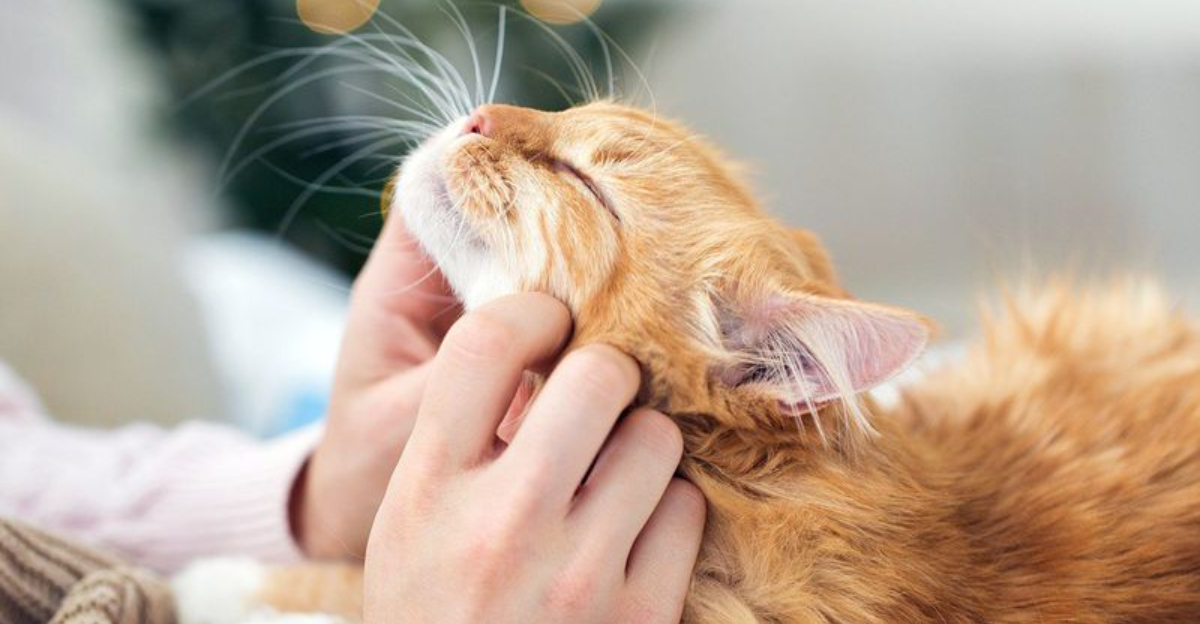Cats are fascinating creatures, and their purring is one of the most intriguing aspects of their behavior. Often associated with contentment, purring can mean so much more.
Whether they’re perched on a windowsill or nestled in your lap, understanding the reasons behind a cat’s purr can deepen the bond between human and feline.
This article explores reasons why cats might purr, ranging from communication to healing powers. Each reason is unique, reflecting the complex nature of these beloved pets.
1. Contentment And Relaxation
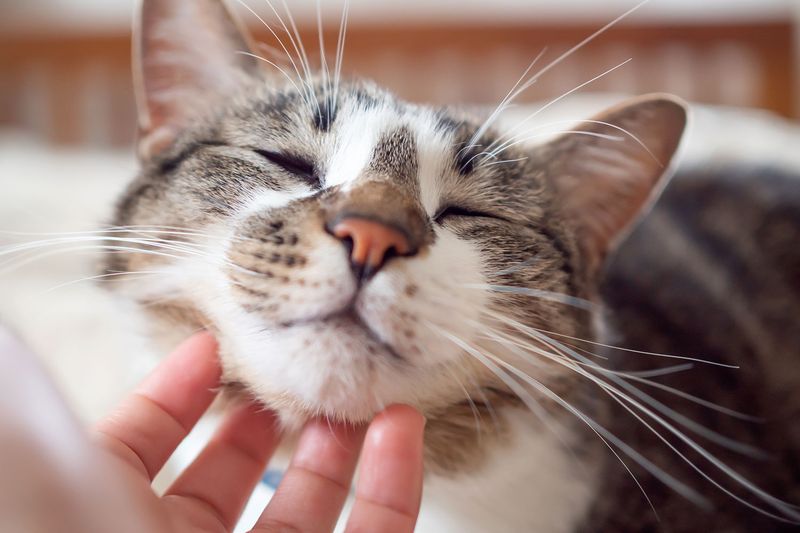
Cats often purr when they’re content and relaxed, reflecting a serene state of mind. This gentle vibration acts as an audible signal that everything is fine in their world, and they feel safe and comfortable.
It’s similar to how humans might hum a tune when they’re in a good mood, conveying satisfaction and peace. When your cat finds a cozy spot on the couch or curls up next to you, the rhythmic hum of their purr can be a heartwarming reminder of their happiness.
This behavior is most common when they’re enjoying a gentle petting session or lounging in a patch of sunlight.
The act of purring is not only comforting for the cat but can also have a calming effect on their human companions. It creates a harmonious environment where both cat and owner can relax and enjoy each other’s company. This mutual benefit strengthens the bond between you and your feline friend.
2. Healing And Recovery
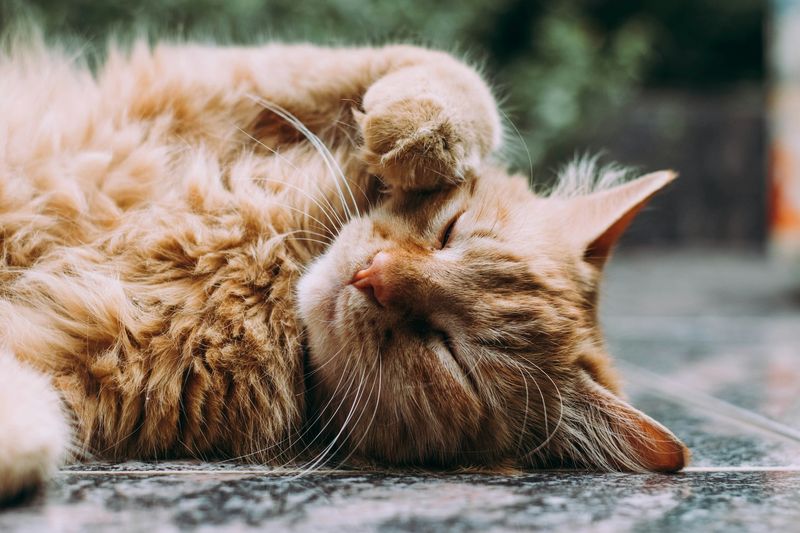
Purring may have healing properties for cats, acting as a natural mechanism to aid recovery. The vibrations produced during purring can stimulate the release of endorphins, which help with pain relief and promote healing.
This biological function is particularly beneficial for injured or stressed cats, providing them with a sense of comfort and support during recovery. Studies suggest that the frequencies of a cat’s purr can improve bone density and promote tissue regeneration.
These vibrations may also help reduce swelling and speed up the healing process. It’s a remarkable adaptation that allows cats to assist in their own recovery, utilizing an inbuilt mechanism that supports their well-being.
While more research is needed to fully understand this phenomenon, the existing evidence highlights the incredible healing power of a cat’s purr. This natural ability to aid recovery is yet another reason why purring is a significant aspect of feline behavior.
3. Bonding With Humans
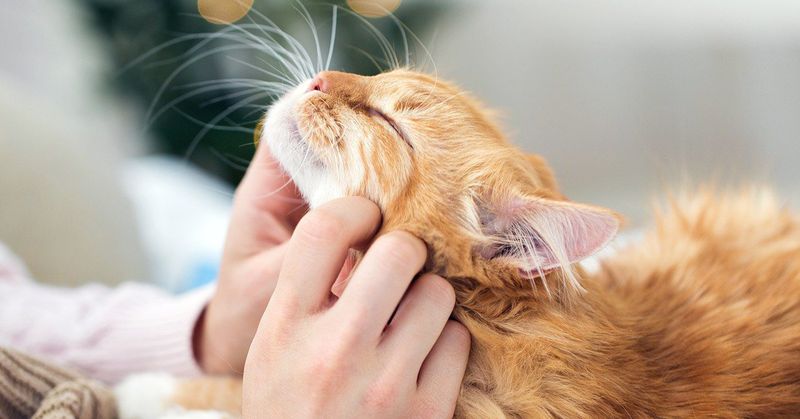
For many, the sound of a cat’s purr is synonymous with affection and bonding. When a cat purrs while being petted or held by a human, it often signifies a strong connection and trust between them.
This vocalization serves as a way for cats to communicate their feelings of safety and love towards their human companions. The purring sound creates an intimate atmosphere, enhancing the emotional connection between cat and owner.
It’s like a soft, vibrating embrace that conveys warmth and trust. This behavior is particularly rewarding for cat owners, as it signals that their feline friend feels comfortable and secure in their presence.
Not only does purring create a sense of harmony and closeness, but it can also have therapeutic effects on humans. The gentle sound and vibrations can reduce stress and anxiety, fostering a peaceful environment. Thus, purring becomes a mutual experience that benefits both parties, strengthening the human-animal bond.
4. Communication With Kittens
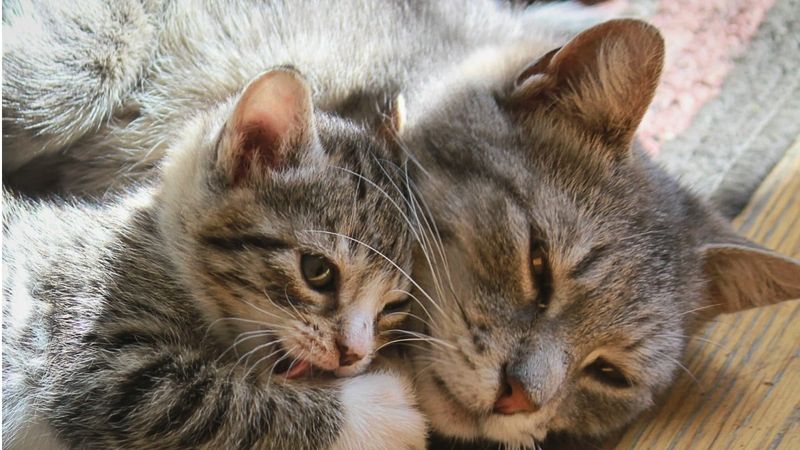
Purring plays a crucial role in communication between a mother cat and her kittens. From birth, kittens are familiar with the comforting sound of their mother’s purr, which reassures them and helps establish a secure environment.
This early form of communication is essential for the kittens’ development, fostering a sense of safety and contentment. Mother cats use purring to guide their kittens, signaling that everything is okay.
The vibrations help the blind and deaf newborns locate their mother, providing them with warmth and nourishment. It’s a gentle way to communicate care and affection, building a nurturing relationship from the very start.
As the kittens grow, they begin to mimic their mother’s purring, using it as a tool for expressing their own needs and emotions. This early exposure to purring sets the foundation for their communication skills, teaching them how to interact with both feline and human companions throughout their lives.
5. Self-Soothing Mechanism
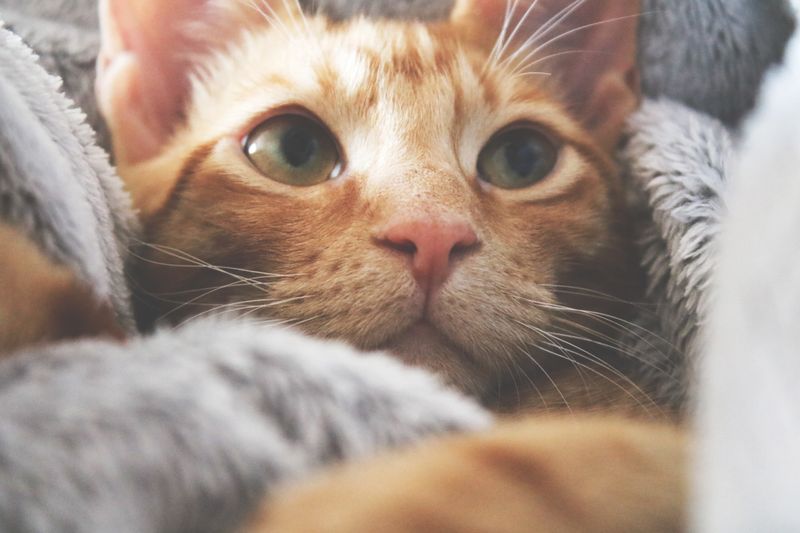
Cats often use purring as a self-soothing mechanism, particularly in situations that might cause them stress or anxiety. This behavior acts as a natural coping strategy, helping them remain calm and composed during challenging times.
The rhythmic sound of purring can provide comfort and reassurance, enabling cats to navigate various emotional states. When faced with unfamiliar environments or new experiences, a cat may resort to purring to maintain a sense of balance and tranquility.
It serves as a way to self-regulate and manage their emotions, allowing them to adapt to changes with grace and poise. Purring as a self-soothing mechanism illustrates the resilience of cats and their ability to care for themselves.
By understanding this behavior, owners can better support their feline friends, providing them with the comfort and security they need to thrive in various situations. This insight into a cat’s emotional world adds depth to the human-animal relationship.
6. Social Interaction With Other Cats

Purring is a vital component of social interaction among cats, acting as a means of communication and connection. When cats purr together, it often signifies harmony and companionship, reinforcing social bonds within a group or between individual felines.
The act of purring in a social setting helps to create a peaceful and cooperative atmosphere, reducing the likelihood of conflict and promoting mutual understanding. It’s a way for cats to express acceptance and friendship, fostering a sense of belonging and community.
This social aspect of purring is not limited to interactions with other cats; it extends to relationships with humans as well.
By recognizing the social nature of purring, cat owners can better appreciate the intricate dynamics of feline communication and provide opportunities for their pets to engage in meaningful social experiences. These interactions enrich the lives of cats, allowing them to thrive both individually and as part of a larger group.
7. Requesting Attention
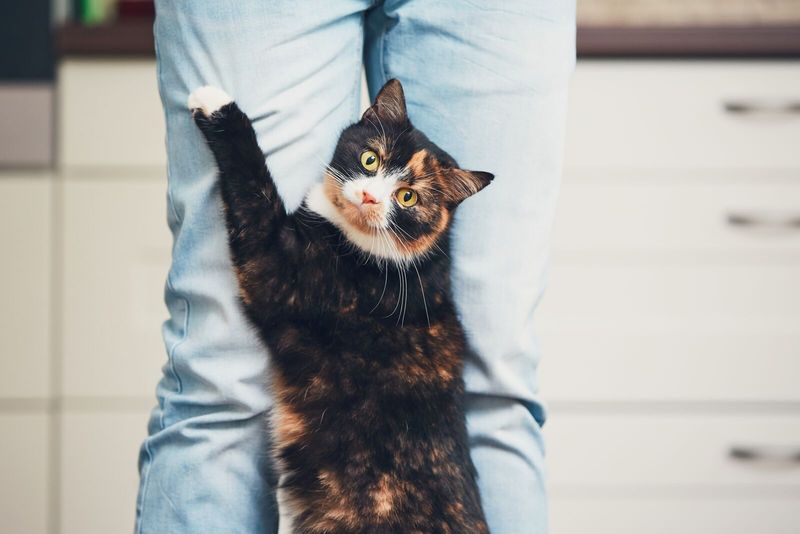
Cats often purr to request attention from their human companions, using this vocalization as a charming way to communicate their needs and desires. Whether they’re seeking a gentle petting session or simply wanting to be near their owner, purring serves as an effective means of capturing attention.
This behavior is particularly common in cats that have established strong bonds with their humans. The sound of purring acts as a gentle reminder that they crave interaction and companionship, inviting their owners to engage with them on a deeper level.
Recognizing this behavior allows cat owners to respond appropriately to their pets’ needs, fostering a nurturing and responsive relationship.
By understanding the subtle cues of purring, owners can create a fulfilling and enriching environment for their feline friends. This mutual understanding enhances the connection between cat and human, making everyday interactions more enjoyable and rewarding.
8. Stress Relief

Purring can serve as a natural stress reliever for cats, helping them cope with anxiety and tension. The soothing vibrations and rhythmic sound act as a calming influence, enabling them to relax and unwind in challenging situations.
This behavior is particularly evident in cats that find themselves in unfamiliar environments or during stressful events. By purring, they can create a sense of calm and balance, allowing them to navigate their surroundings with confidence and ease.
Understanding the role of purring as a stress-relief mechanism enables cat owners to provide the necessary support and comfort for their pets.
By creating a peaceful and secure environment, owners can help their feline friends reduce stress and enjoy a more harmonious life. This insight into the calming effects of purring adds another layer of appreciation for the complex emotional world of cats.
9. Marking Territory
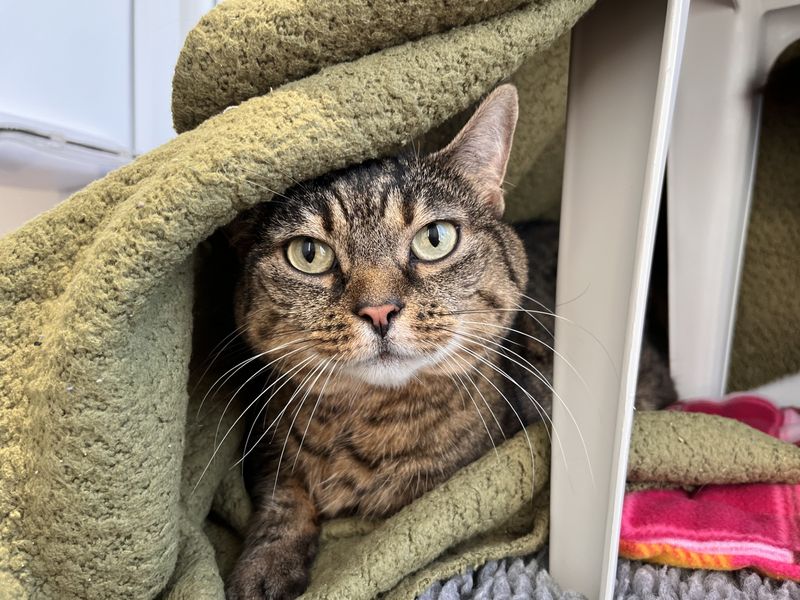
Purring can play a role in marking territory, particularly when combined with scent-marking behaviors like rubbing their face against objects. This combination creates a multi-sensory signal that communicates ownership and presence within a particular area.
Cats use purring as part of their territorial behavior to establish boundaries and convey a sense of belonging. It acts as an audible marker that complements the scent marks left behind, reinforcing their claim to a space.
By recognizing this aspect of purring, cat owners can better understand their pets’ territorial nature and provide an environment that respects their need for personal space.
This awareness fosters a more harmonious relationship between cat and owner, ensuring that both parties feel comfortable and secure in their shared living space. Such insights into feline behavior enrich the human-animal bond, allowing for a deeper connection and understanding.
10. Preparing For Sleep
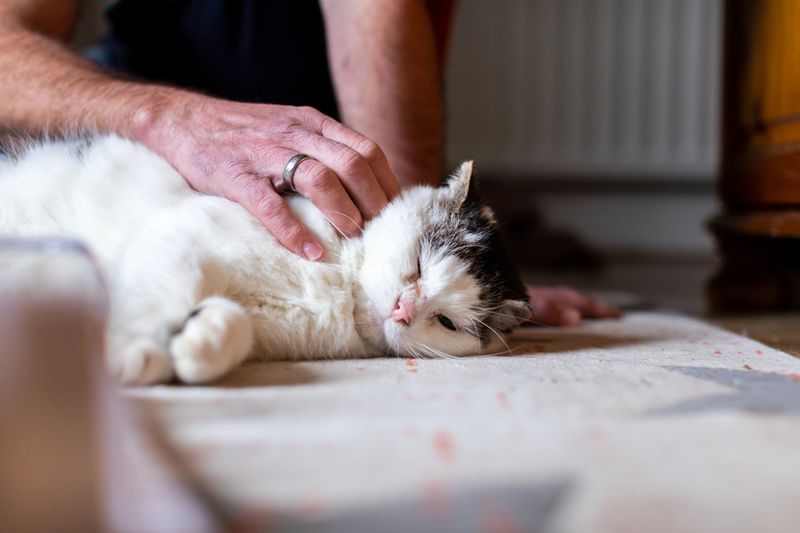
Purring is often associated with sleep preparation, as cats use this behavior to transition into a restful state. The soothing vibrations and gentle sound create a calming atmosphere, helping them relax and unwind before drifting off to sleep.
When a cat begins to purr in a relaxed setting, it’s a signal that they’re ready to settle down for a nap. The rhythmic hum acts as a lullaby, lulling them into a peaceful slumber and ensuring a restful and restorative sleep.
Understanding this behavior allows cat owners to provide a conducive sleeping environment for their pets, enhancing their overall well-being. By recognizing the role of purring in sleep preparation, owners can support their cats’ natural rhythms and promote a healthy and balanced lifestyle.
This attention to their feline friends’ needs fosters a nurturing and supportive relationship, enriching the lives of both cat and owner.
11. Expressing Hunger
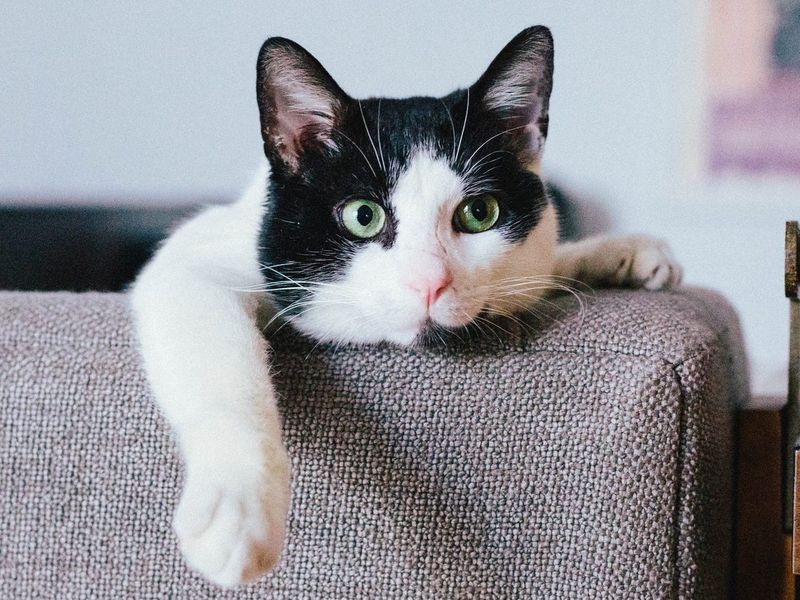
Cats may purr as a way to express hunger or anticipation for a meal. This behavior serves as a gentle reminder to their owners that it’s time for feeding, utilizing the power of purring as a subtle and charming form of communication.
When a cat purrs near their food bowl or during their usual feeding time, it’s often an indication of their desire for nourishment. The sound acts as a persuasive tool, encouraging their human companions to respond promptly to their needs.
Understanding this aspect of purring enables cat owners to recognize and meet their pets’ nutritional requirements, ensuring their health and well-being. By paying attention to these vocal cues, owners can establish a consistent feeding routine that aligns with their cats’ natural instincts.
This mutual understanding of communication enriches the relationship between cat and human, making daily interactions more satisfying and enjoyable.
12. Indicating Well-Being
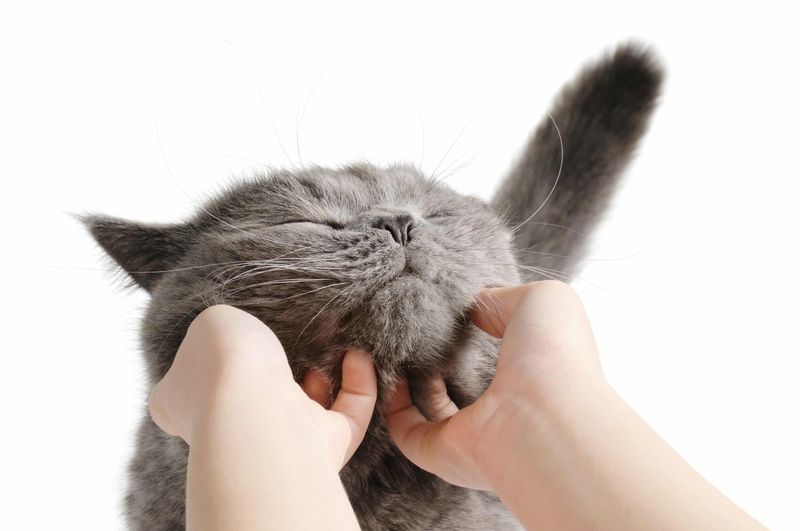
Purring often serves as an indicator of a cat’s overall well-being, reflecting a state of health and happiness. When a cat purrs freely and regularly, it typically signifies that they are in good physical and emotional condition.
This behavior can act as a barometer for their quality of life, offering insights into their mental and physical state. A content and healthy cat is more likely to engage in frequent purring, conveying a positive message to their human companions.
By observing this behavior, cat owners can gain valuable insights into their pets’ well-being, ensuring that their needs are being met. Regular purring serves as a reassuring sign that their cat is thriving, providing peace of mind and enhancing the bond between cat and owner.
This awareness of feline health and happiness fosters a deeper connection and appreciation for the unique characteristics of cats.
13. Showing Affection To Humans
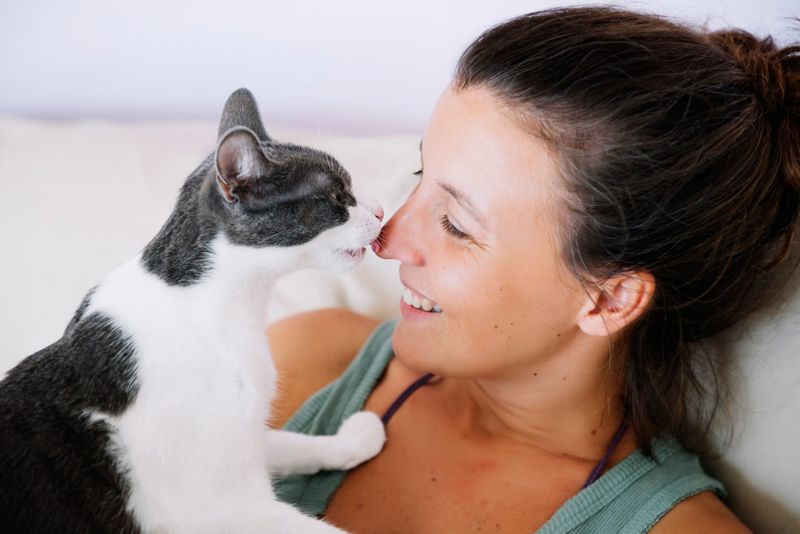
Cats often use purring as a way to express affection towards their human companions, conveying love and trust through this soothing sound. This behavior creates a warm and nurturing atmosphere, strengthening the emotional connection between cat and owner.
When a cat purrs while being petted or held, it’s a sign that they feel safe and cherished in the presence of their human. The gentle vibrations act as a form of communication, expressing gratitude and appreciation for the companionship they receive.
Recognizing this affectionate behavior allows cat owners to reciprocate their pets’ feelings, fostering a loving and supportive relationship.
By understanding the nuances of purring, owners can create a harmonious environment where both parties feel valued and connected. This mutual exchange of affection enriches the lives of both cat and human, making everyday interactions more meaningful and rewarding.
14. Indicating Discomfort Or Pain
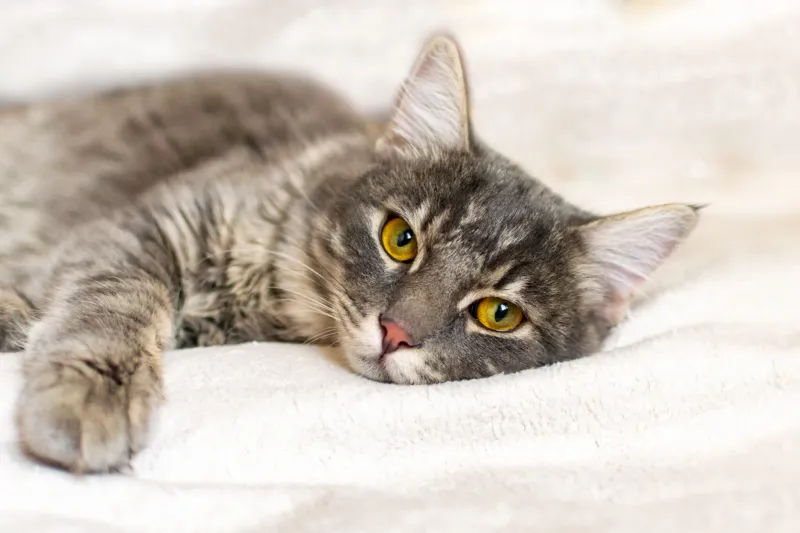
While purring is often associated with positive emotions, it can also indicate discomfort or pain in cats. This counterintuitive behavior may serve as a coping mechanism, helping them manage their distress and maintain a sense of calm.
Cats might purr when they’re feeling unwell or experiencing physical discomfort, using the vibrations as a form of self-soothing. This behavior can be misleading, as it contradicts the common perception of purring as a sign of contentment.
Understanding this aspect of purring allows cat owners to recognize potential signs of illness or discomfort in their pets. By paying attention to changes in their cat’s purring patterns, owners can identify when something might be wrong and seek veterinary care if necessary.
This awareness enhances the ability to care for their feline friends, ensuring their health and well-being are prioritized. It underscores the complexity of feline communication and the importance of attentive pet care.
15. Enhancing Bone Density
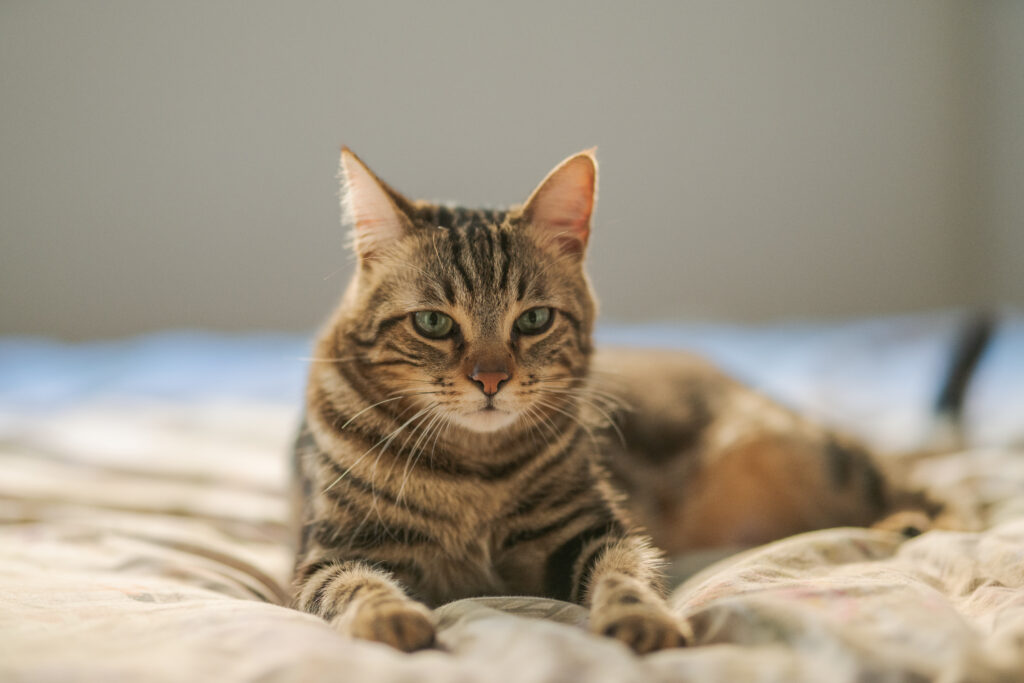
One fascinating aspect of purring is its potential role in enhancing bone density. Some studies suggest that the frequencies of a cat’s purr can stimulate bone growth and strengthen skeletal structure, acting as a natural mechanism for maintaining bone health.
This biological function may be particularly beneficial for aging cats or those with mobility issues, providing them with an innate way to support their physical well-being. The vibrations produced during purring can potentially aid in keeping their bones resilient and robust.
While more research is needed to fully understand this phenomenon, the existing evidence highlights the incredible adaptability of cats and their ability to use purring for physiological benefits.
By appreciating this aspect of feline behavior, cat owners can gain a deeper understanding of their pets’ unique attributes and support their health in various ways. This insight enriches the relationship between cat and owner, fostering a sense of wonder and admiration for these remarkable creatures.
16. Regulating Breathing
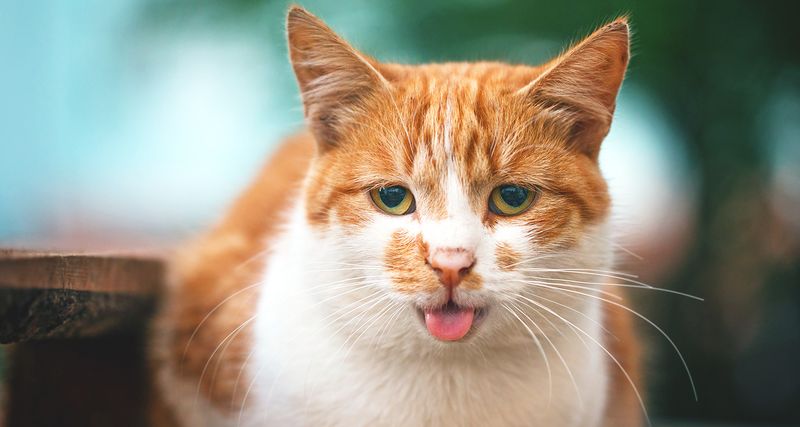
Purring may play a role in regulating a cat’s breathing patterns, helping them maintain a steady and calm respiratory rhythm. This behavior acts as a natural mechanism for promoting relaxation and ensuring a balanced state of being.
Cats often purr when they’re at rest, using the vibrations to align their breathing with a soothing and rhythmic cadence. This alignment can contribute to a sense of tranquility and well-being, enhancing their overall quality of life.
By understanding the connection between purring and breathing regulation, cat owners can better appreciate the intricate ways in which their pets maintain their health and vitality.
This awareness fosters a deeper connection between cat and human, allowing for a more harmonious and supportive relationship. It underscores the complexity of feline behavior and the remarkable adaptations that enable cats to thrive in various environments.
17. Inducing Labor In Pregnant Cats
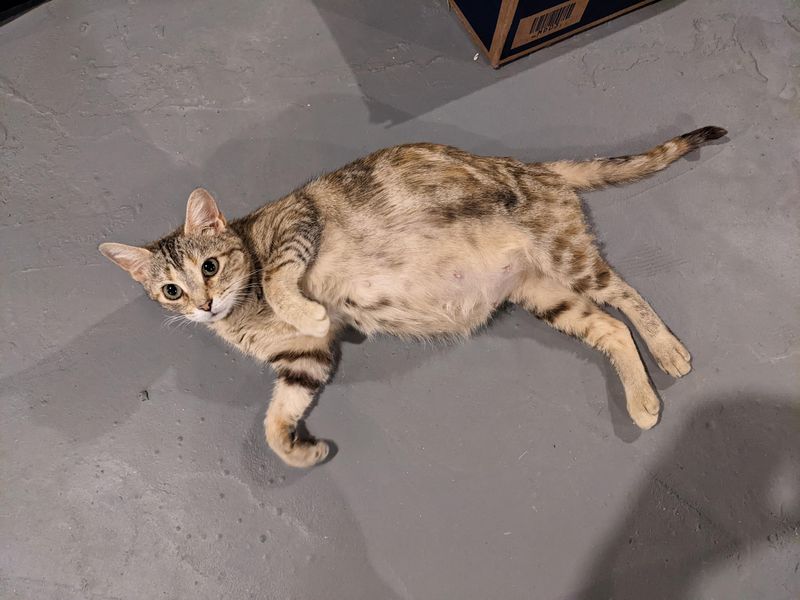
Purring may have a role in inducing labor in pregnant cats, acting as a natural mechanism to prepare for the birthing process. This behavior can help create a sense of calm and readiness, assisting the cat in transitioning smoothly into labor.
The soothing vibrations and rhythmic sound of purring can contribute to a relaxed state, enabling the cat to manage the physical and emotional demands of childbirth. This natural adaptation may support both the mother and her kittens, ensuring a safe and successful birthing experience.
Understanding this aspect of purring allows cat owners to provide appropriate care and support for pregnant cats, creating an environment that facilitates a positive birthing experience.
By recognizing the role of purring in labor induction, owners can enhance their pets’ well-being and ensure a healthy start for the newborn kittens. This insight into feline reproduction adds depth to the understanding of cat behavior and care.
18. Adjusting To New Environments
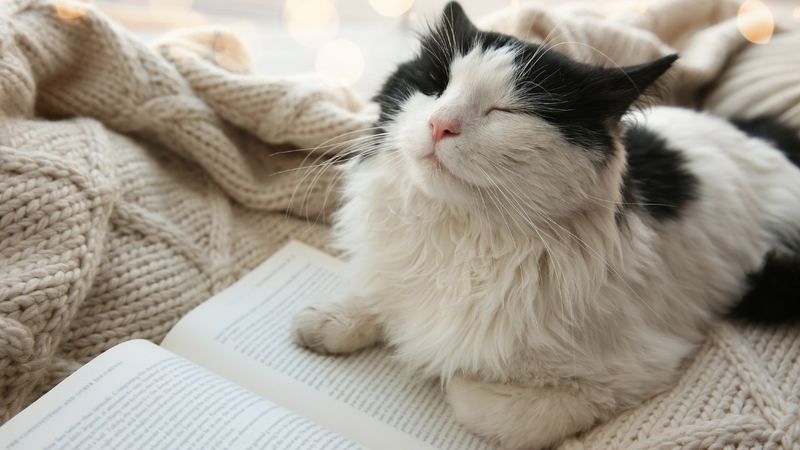
Cats often use purring as a way to adjust to new environments, helping them feel more at ease in unfamiliar settings. This behavior serves as a coping strategy, allowing them to navigate change with confidence and curiosity.
When a cat enters a new home or encounters a novel situation, purring can provide a sense of reassurance and stability. The vibrations act as a self-soothing mechanism, enabling them to explore and adapt to their surroundings without fear.
By understanding the role of purring in environmental adaptation, cat owners can support their pets during transitions, providing comfort and encouragement as they settle into new spaces.
This awareness fosters a more supportive relationship between cat and owner, ensuring that both parties feel comfortable and secure in their shared environment. Such insights into feline behavior enrich the human-animal bond, allowing for a deeper connection and understanding.
19. Feline Communication Tool
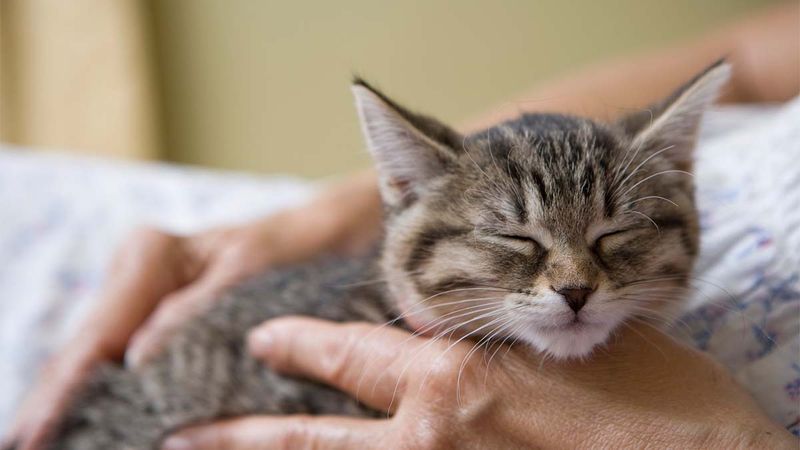
Purring serves as a versatile communication tool for cats, enabling them to convey a wide range of emotions and intentions. This behavior acts as a vocal expression that can be used in various contexts, from social interactions to signaling needs and desires.
Cats may purr to express contentment, request attention, or communicate with other felines. The sound and vibrations serve as a flexible means of interaction, allowing them to navigate their social world with ease and clarity.
By recognizing the communicative aspect of purring, cat owners can gain valuable insights into their pets’ emotional and social lives. This understanding fosters a deeper connection between cat and human, enabling more meaningful and responsive interactions.
It highlights the complexity of feline communication and the importance of attentive care and observation. This awareness enriches the human-animal relationship, making everyday experiences more fulfilling and enjoyable.

